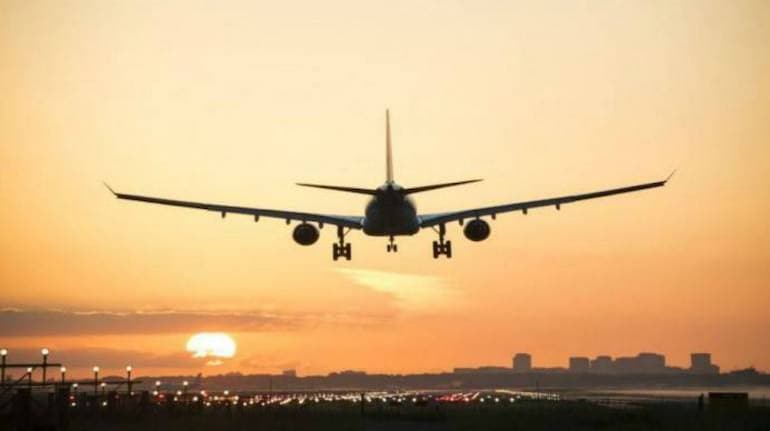



A month after the news of Tata Sons increasing its stake in AirAsia India to over 80 percent and the month when the Air India bidding process is likely to go a step ahead, the Tata group has received a pleasant surprise. The joint market share of Vistara — the group’s joint venture with Singapore Airlines — and AirAsia India — the joint venture with AirAsia Group — has touched 13.2 percent and crossed the market share of Spicejet, the second largest carrier in the country, for December.
The Tata group is often referred to as a salt-to-software conglomerate but equally criticised for relying on a single engine, TCS, to pull the entire group ahead. As in the past, while the group has a presence across multiple areas, the focus and publicity is coming in from aviation.
Not the right measure
With two Air Operating Permits, management and control structures, this may not be the right way to measure its market share but it sure does sound the bugle for the battle that the group seems inclined to take up. Aviation in India is a business where making money has been an eternal challenge and both models — full service (Vistara) and low-cost (AirAsia India) have not recorded profits since inception.
Vistara and AirAsia India started at different times, have separate joint venture partners and separate managements. More importantly, they have separate Air Operating Permits (AOP) and thus their market share or passenger numbers cannot be clubbed for the group.
In the past, numbers had been clubbed when Jet Airways acquired Air Sahara, and Kingfisher Airlines merged with Air Deccan. And, of course, the Air India airlines are clubbed together to report market share.
In the Tata Group’s case, while the part ownership is the same, a similar measure will not be used to report the numbers of the two airlines.
Yet, the position is important as the future of AirAsia India hangs in the balance. Will the airline be merged with Vistara? Will the brand be retired with slots, planes and employees transferred to Vistara over a period of time? Will the decision be dependent on the outcome of the privatisation of Air India? There are more questions than answers at this time.
Who is leading the onslaught?
Currently Vistara has a fleet of 41 aircraft — a mix of A320, A320neo, A321neo, B737-800 and B787-9 Dreamliners — while AirAsia India has a fleet of 33 aircraft. The number of aircraft though does not justify the capacity since Vistara operates three classes of service on most of its aircraft while AirAsia India has mono class aircraft in service and higher utilisation.
AirAsia India had a market share of 6.9 percent while Vistara cornered 6.3 percent in December. Spicejet, on the other hand, had 13 percent market share. Together, AirAsia India and Vistara carried 9.63 lakh passengers compared to the 9.52 lakh carried by Spicejet.
Data shows that last October there was a slender lead Vistara and AirAsia India combined had over Spicejet. This lead has now been extended a bit. December saw Vistara deploy the B787-9 on more domestic routes as flights to London came to a halt for over a week. AirAsia India has been getting more and more aircraft into operations and expanding its network rapidly month over month.
Spicejet
The airline, which had dethroned national carrier Air India to reach the number two spot behind IndiGo, has been focussing on cargo in the last few months. It has converted a couple of Q400s exclusively to carry cargo. And apart from its dedicated fleet of freighters, it is also operating B737s for exclusive cargo operations.
The airline would not be too worried about the combine breathing down its neck unless the Tata group airlines are merged and team up for the revenue network and other commercial areas. If and when that happens, Spicejet would be on a different trajectory if it manages to infuse cash and start accepting the B737MAX — 13 of which are grounded in the country right now as a fallout of the worldwide grounding.
Glimmer of hope for the Tatas?
The boardroom battle at Tata Sons had seen the maximum publicity on the aviation portfolio front. It was much smaller then than it is today.
Two months of inching closer at the group level could see a ray of hope for Tata Sons about the future of the aviation business as it intends to be Number One or Two in all the businesses it is present in.
The Tatas ended 2020 on a positive note, in the month when the group decided to increase its stake in one of the airlines. The year 2021 is filled with myriad challenges for all group entities and aviation will face the biggest challenges. So, the positive note at the end of 2020 could not have come at a better time.
Discover the latest Business News, Sensex, and Nifty updates. Obtain Personal Finance insights, tax queries, and expert opinions on Moneycontrol or download the Moneycontrol App to stay updated!
Find the best of Al News in one place, specially curated for you every weekend.
Stay on top of the latest tech trends and biggest startup news.